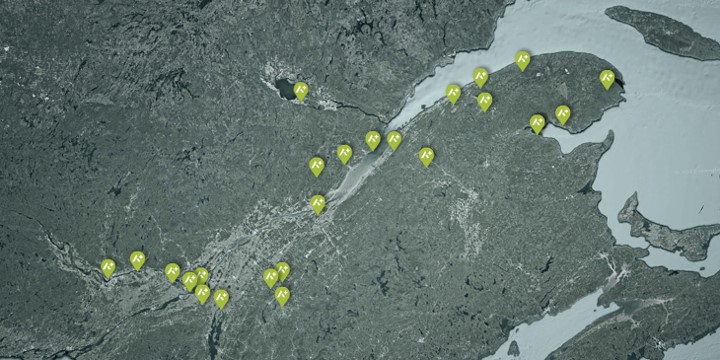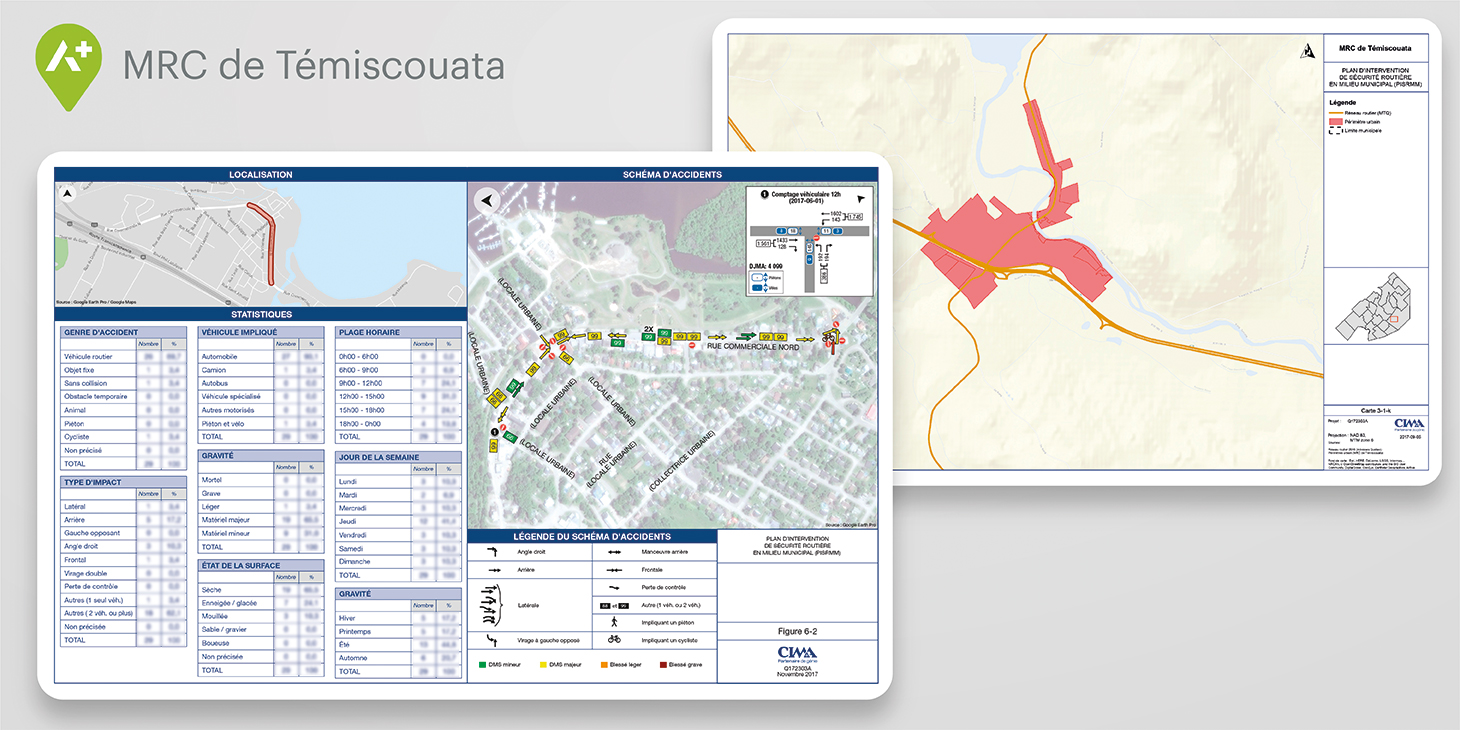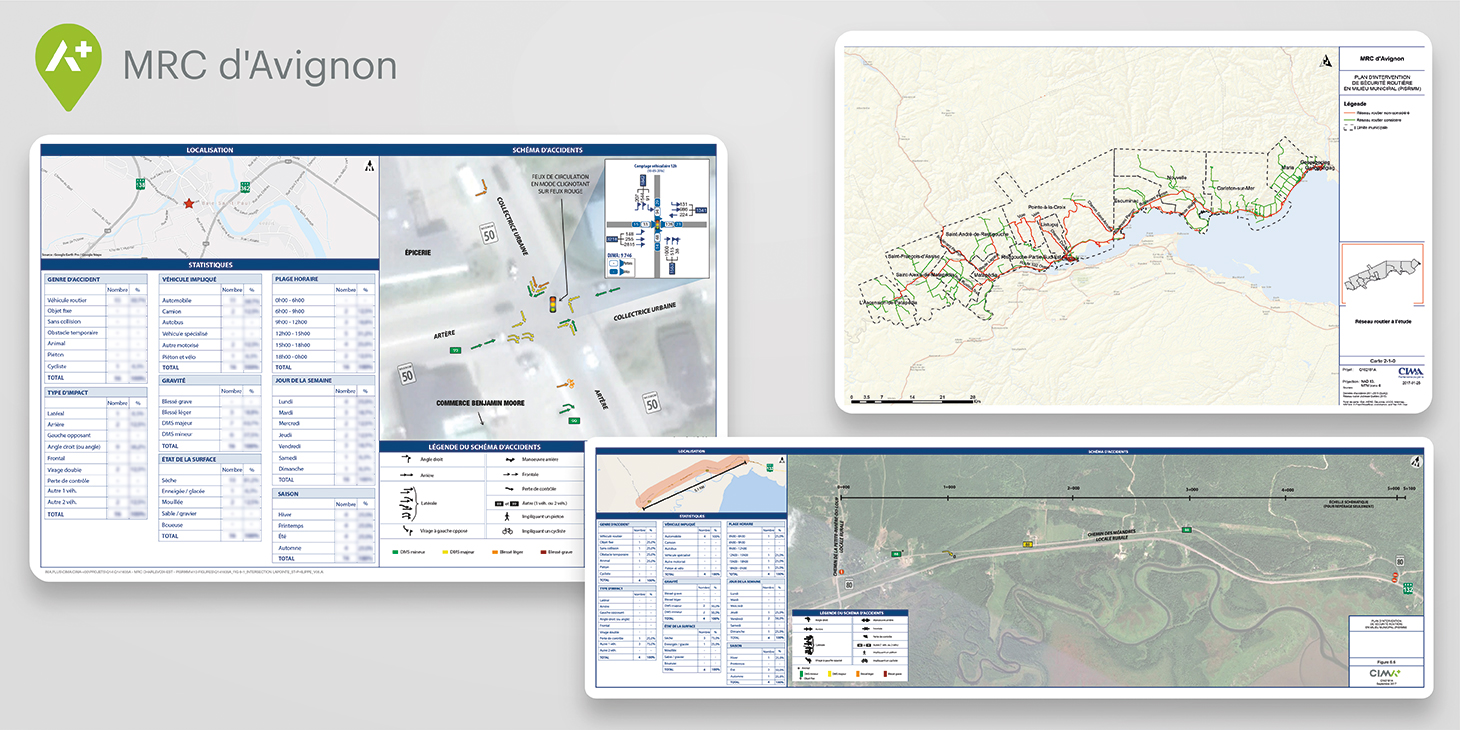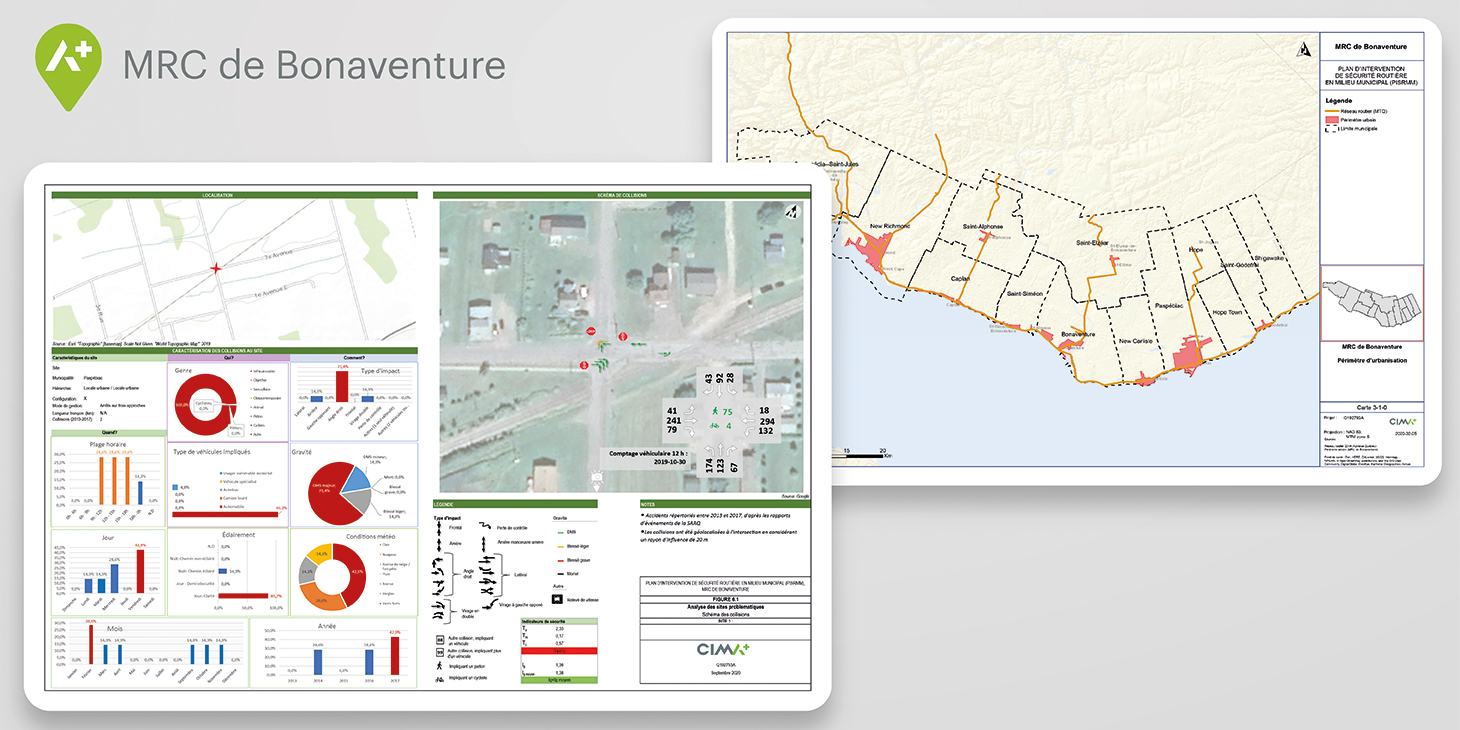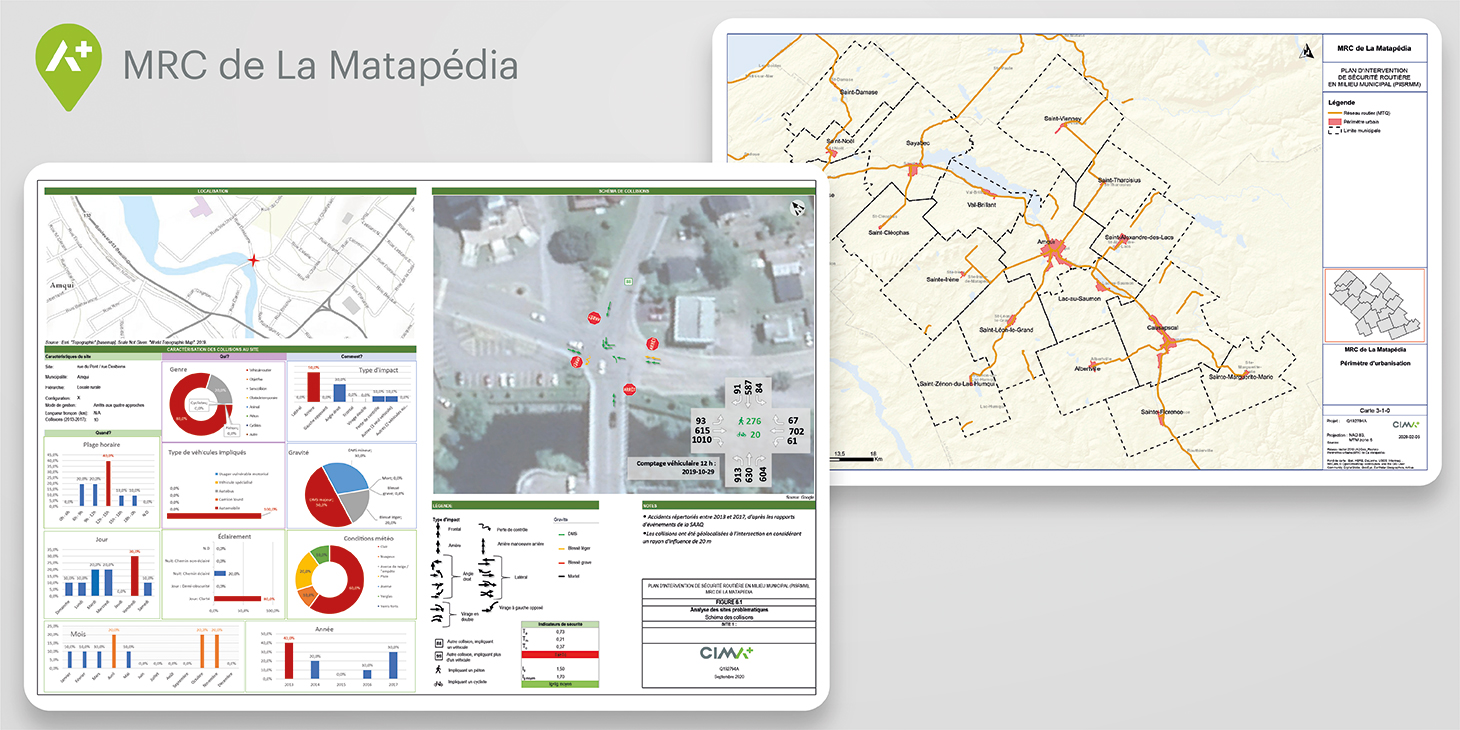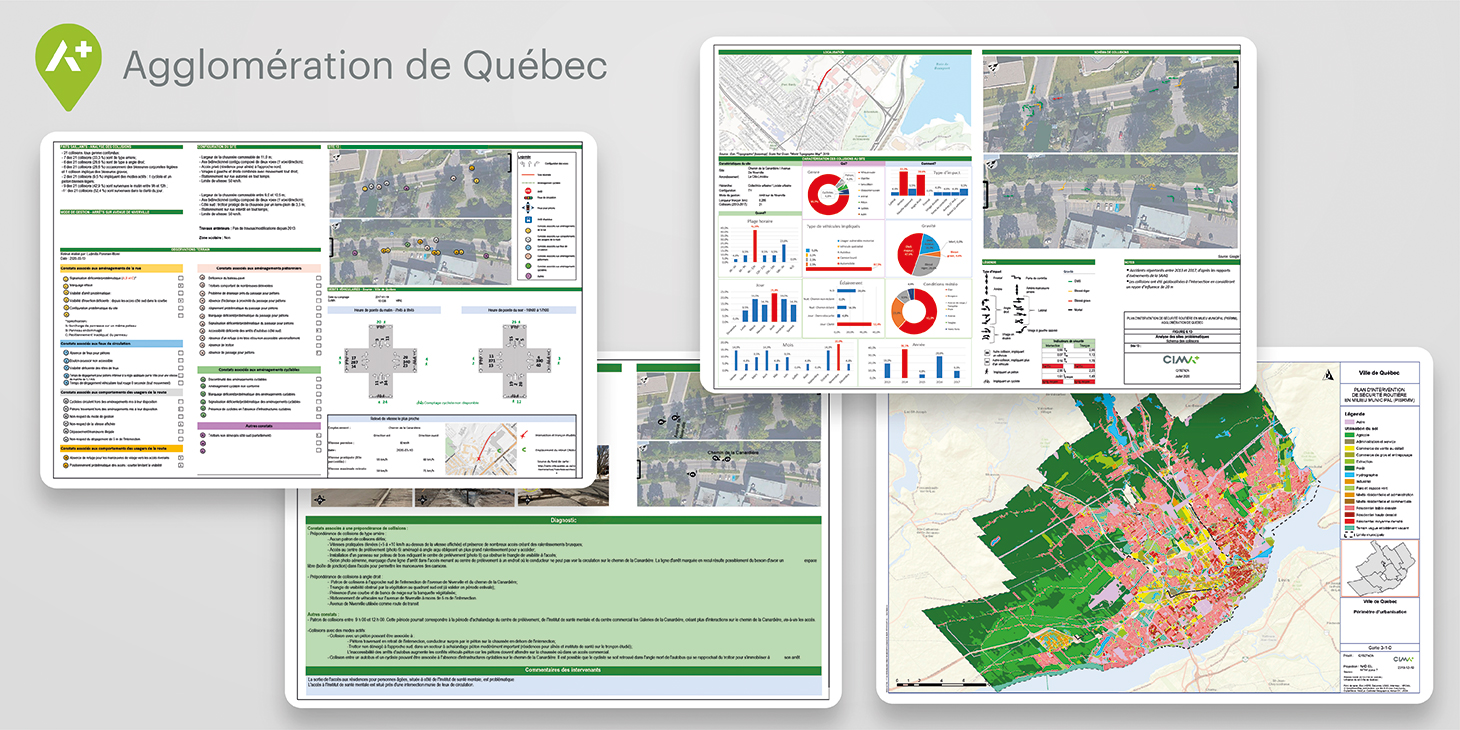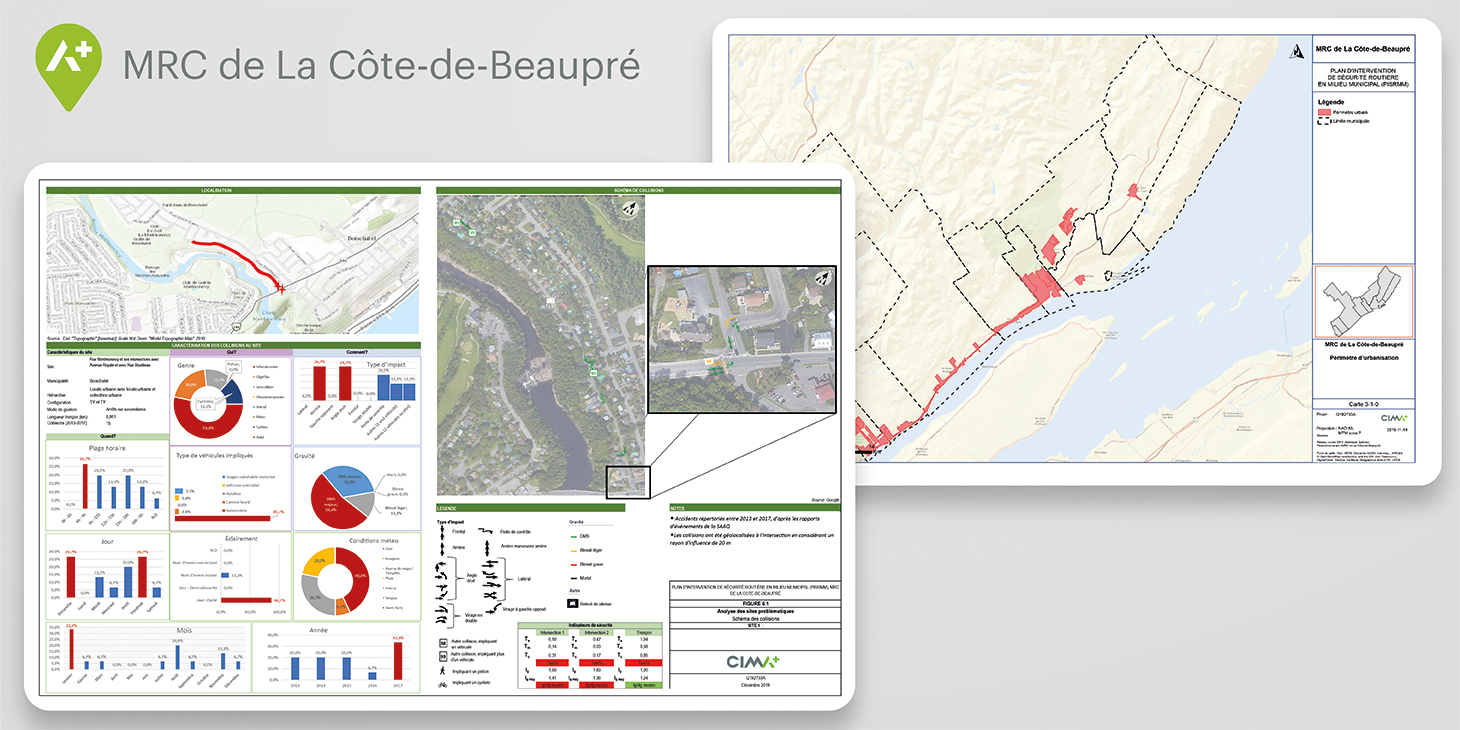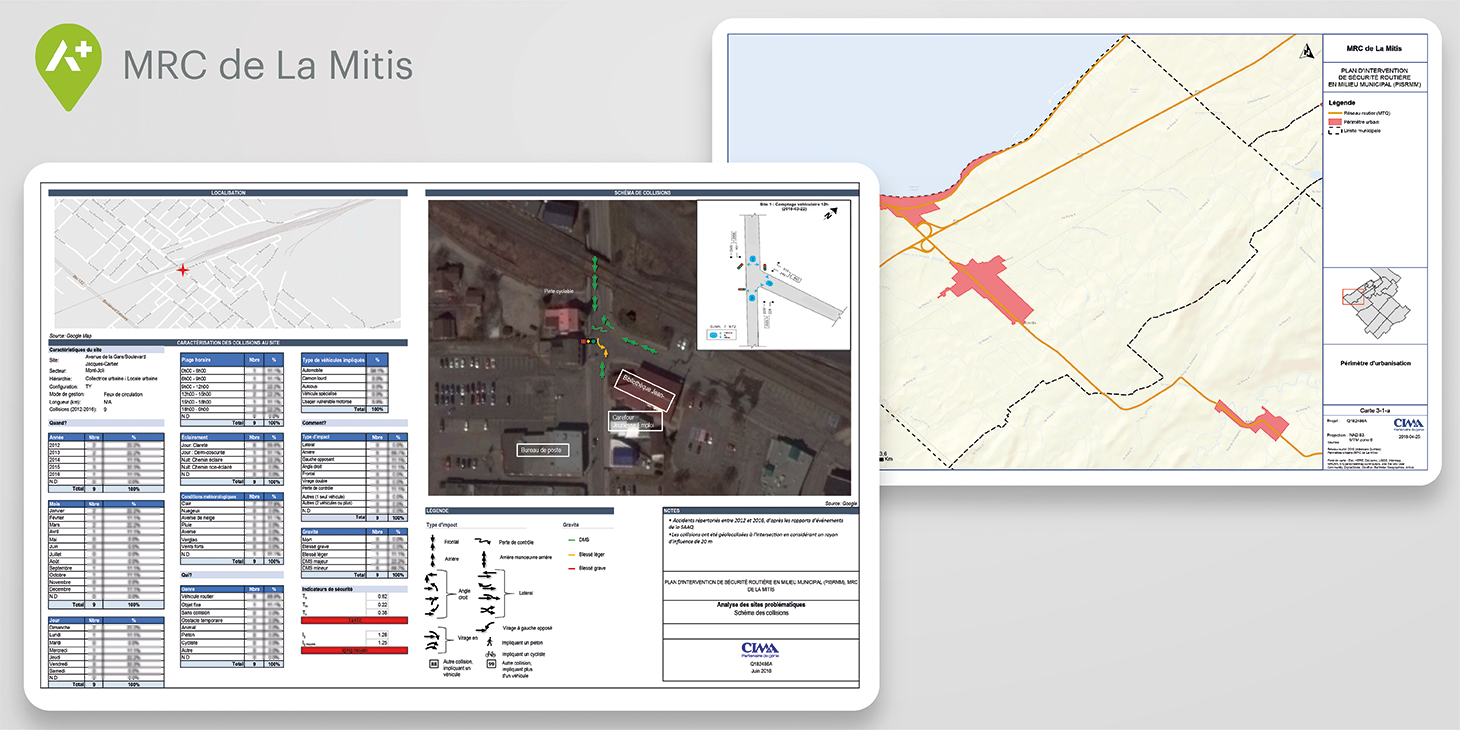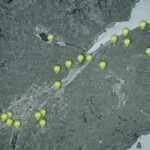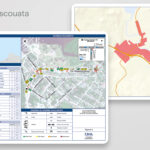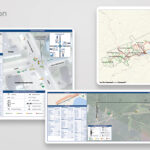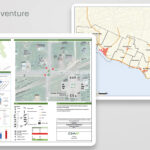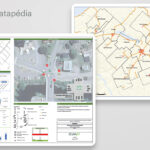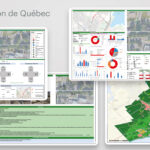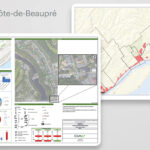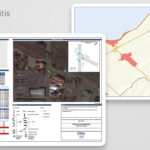A series of cohesive RSPs represents an intervention strategy that targets increased road safety throughout the territory while promoting a cooperative approach involving the various stakeholders within the community. The execution method proposed by CIMA+ respects the MTMD’s standards and allows RCMs and municipalities to equip themselves with a global road safety management tool by identifying the most at-risk areas and the most effective solutions for resolving the highlighted problems.
The creation of 24 RSPs by the CIMA+ team demonstrates our expertise in conducting complex safety studies that require the use of specialized tools.
Following the approval of detailed work plans by the Ministère des Transports et de la mobilité durable (MTMD), our road safety experts initiated the cooperative approach involving partners from each area in order to collect a multitude of information concerning safety problems through the use of surveys and workshops. All of the comments received from partners and municipal representatives were taken into consideration in identifying potentially problematic sites.
During the data acquisition stage, traffic counts and speed surveys were conducted at sites (road segments or intersections) where road safety problems were identified based on an elevated level and severity of accidents. CIMA+ then structured the databases required for analyzing the accidents.
The analysis of accidents made it possible to identify recurring safety problems. Safety indicators were then calculated for the existing intersections and segments of the territories under study. The results were presented using themed tables, figures and charts. Given the fact that the number of problematic sites identified exceeded the maximum threshold of sites to be studied, those sites that presented specific problems related to the number and severity of accidents and/or collision patterns were prioritized for each RSP created. Potential solution approaches were developed in the form of data sheets, and relevant improvement measures and the related costs were then established.
